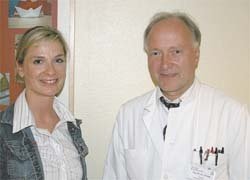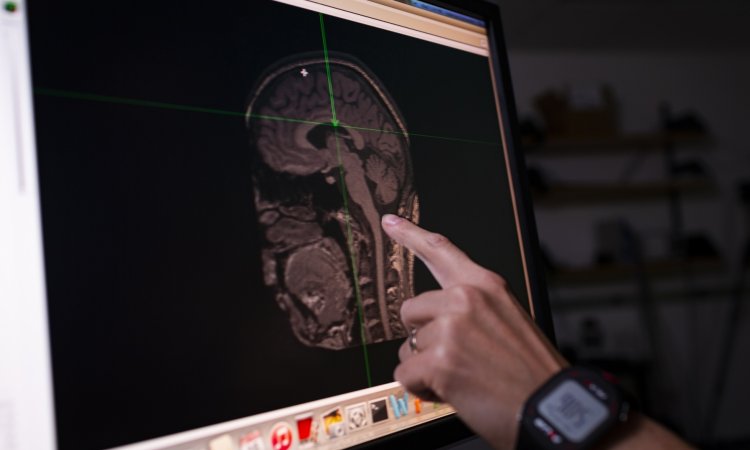
Article • Stroke prevention
Ultrasound brings many advantages, but trained sonographers are too few
‘Without any doubt prevention is not only the best but also the safest treatment for stroke. It is precisely in prevention where ultrasound offers these enormous advantages over all other modalities, and this applies not just to radiation exposure. Roughly 90% of all strokes are due to insufficient blood supply to the brain due to vascular obliteration, including stenosis of the carotid arteries. Since this part of the human anatomy is easily investigated by ultrasound, in 98% of the patients we can assess the status of the carotid arteries quite definitely, without having to fall back on any other modality. It is our overall goal that ultrasound will supplant X-ray studies, even in the diagnostic workup of stroke. In the case of catheter angiography, a modality with a certain inherent risk of side effects, we have already been successful: the standard modality up until recently, angiography of the cerebral arteries is uncalled for in 99% of cases,’ said Prof Arning. Since no other low-risk imaging modality exhibits such an excellent spatial resolution as ultrasound he also advises: ‘Patients at increased risk for stroke should undergo regular preventive ultrasound workup. The degree of stenosis is the most important criterion when assessing the risk of vascular obliteration. From this information alone the expert investigator can infer the seriousness of the carotid artery stenosis.’
However, the safety and accuracy of the study requires proper training and extensive experience of the sonographer. According to Professor Arning many German hospitals specifically lack these competent healthcare professionals. ‘The reason for this stems from the fact that although in Germany ultrasound is taught during residency, there are no uniform standards in quality assurance and no minimum standards for the teaching syllabus. Furthermore, not even the qualification of the teacher has been laid down in the residency regulations. Therefore, quite often one resident will pass on his/her partial knowledge to the next. But for this modality the operator’s experience is of paramount importance. A study on abdominal ultrasound published in 2006 demonstrated that less experienced ultrasound operators came up with the correct diagnosis in only 39% of cases, while for the experienced sonographer this rate jumped to 95%. An accuracy of 95% is identical with that seen in other modalities, such as CT and MRI. When patients are studied by sonographers who are not properly trained, time and time again either non-existent vascular stenosis will be diagnosed or dangerous stenoses will simply be overlooked.’

These significant differences in the quality of ultrasound instruction result in a large risk for the patient. Since currently there is no ‘warranty’ for a constantly high level of competence in ultrasound, the DEGUM* has developed a voluntary scheme of certification that will make transparent the quality of the ultrasound study. ‘For this certificate physicians will have to pass tests on specialised areas of application of ultrasound. This ensures that the physician treating the patient will be able to solve the pertinent issues in a particular disorder.’
The problems of specialisation are also seen in other countries: For example, in the USA and the UK ultrasound is performed by sonographers. These are medical technicians with extensive experience in the modality but whose diagnostic ability is hampered by the fact that they are not fully-trained physicians. ‘Qualified diagnostic ultrasound makes it possible to realise a new structure in diagnostic decision-making. Currently, in the case of ambiguous findings, a physician not well trained in ultrasound will refer the patient to the radiologist. However, it would be much better if patients with ambiguous findings could be referred to an experienced sonographer,’ the professor concluded.
* The DEGUM certification scheme has three levels. ‘DEGUM Level I is a qualified basic training, teaching the user the principles as well as simple applications,’ Prof Arning explained. ‘DEGUM Level II deals with more demanding applications and requires several years of experience by the sonographer. The level II certificate also includes the skills as an instructor. DEGUM III, the third and highest level of excellence, also includes scientific research in ultrasound.’
01.09.2008











